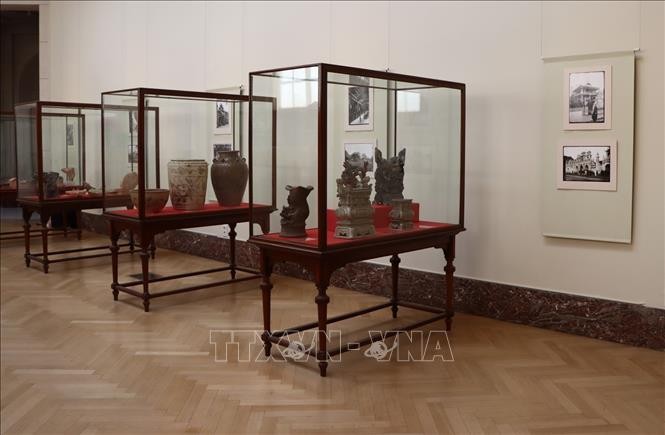Endangered red-crowned cranes spotted to reappear in Mekong Dalta
Phu My Biosphere Reserve in Kien Giang Province on Saturday confirmed the 30 cranes had been here for half a month. This year, however, they have not gathered among the grey sedge but instead found a quiet corner within the reserve. In the afternoon, the cranes typically flock to Anlung Pring, Cambodia to rest.
About 150 kilometers away, a family of three cranes was spotted in Tram Chim National Park of Dong Thap Province on Friday afternoon.
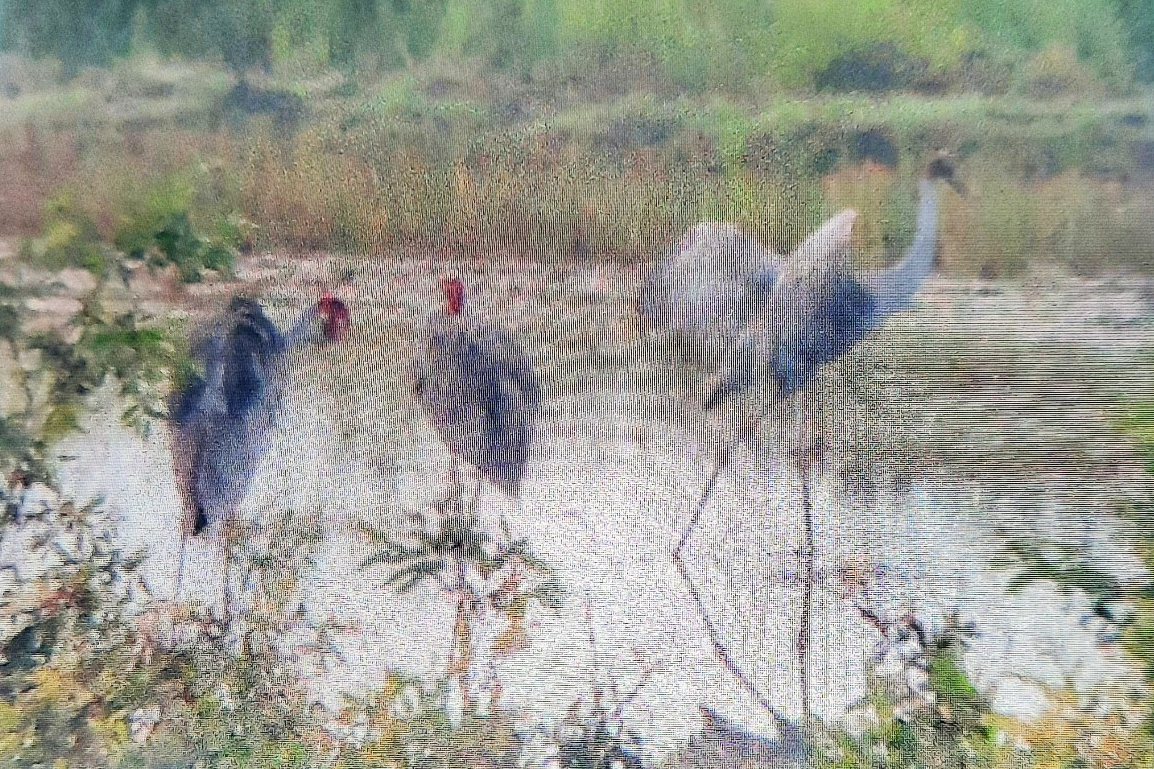 |
| The three red-crowned cranes in Tram Chim National Park. Photo by VnExpress/Do Minh Chanh. |
"This crane family has been returning here over three consecutive years, from 2017 to 2019, but in 2020 they didn’t come back," said Le Thanh Cu, vice director of Tram Chim National Park, according to VnExpress.
As a crane conservation volunteer at the International Crane Association, Nguyen Hoai Bao, vice director of Wetland Research Center at Vietnam National University Ho Chi Minh City - University of Science, immediately visited Tram Chim National Park after learning about the return of the red-crowned cranes.
Bao said since the cranes came back very late, they could only stay in the national park for a few days before departing. "Their normal cycle is to stay in the park until the end of April then fly to Cambodia to rest prior to the breeding season."
Tram Chim National Park was recognized as the world's 2,000th Ramsar site (a wetland designated to be of international importance under Ramsar Convention) and the first of the Mekong Delta, with an area of more than 7,300 hectares. It is one of the world's most famous stops for red-headed cranes, a factor that helped Tram Chim become a Ramsar site.
However, the number of rare cranes here has decreased rapidly over the years. Statistics showed that in 1998, the number of red-headed cranes in Tram Chim was 1,052 but by 2017 there were only nine. In 2018 and 2019, the number was 11.
Phu My Biosphere Reserve recorded the biggest number of red-crowned cranes in 2003, at more than 500. In 2016, the reserve was officially established, covering an area of nearly 2,900 hectares. The core area of 1,200 hectares is for grey sedge. By 2019, there were only 54 cranes returning here.
Bao said the decline in cranes has many reasons, mainly habitat loss. Natural wetland habitats across the Mekong Delta have been converted into agricultural and aquaculture land, disrupting the balance of ecosystems, resulting in little to no chance for cranes to thrive here.
Over past years, national reserves have focused on developing habitats to attract more cranes. However, Bao said changing the ecosystem to restore crane habitats would take many years.
Red-crowned crane – Endangered species
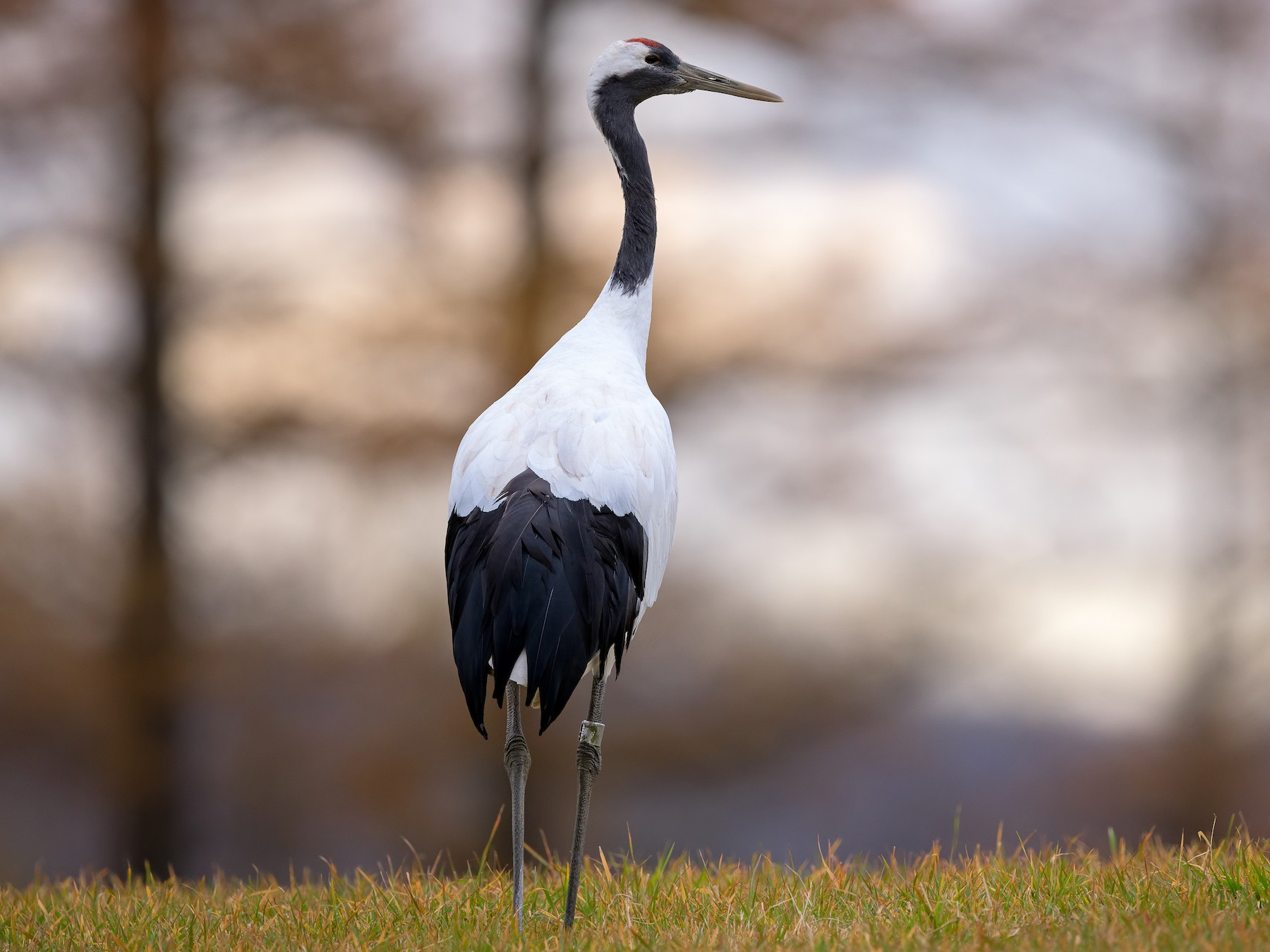 |
| Photo: Getty Images |
The red-crowned crane has been a symbol of immortality for centuries. Although its official binomial name is Grus japonensis, or “Japanese crane,” it has also captured the imaginations of people in China, Mongolia, Russia, and the Korean peninsula. The red-crowned crane gets its name for the disc of bare red skin atop its head. Its natural habitat is wide-open pristine wetlands where it can fish for its food.
Aside from their red crowns, these cranes are often snow white, with black secondary feathers. Their young are also white, mixed with shades of brown or gray. Their beaks are deep green and sharp, useful for spearing their prey. Red-crowned cranes are often long and tall—some of the world’s largest cranes. The fully-grown adult stands at five feet, with a wingspan that grows to eight feet. Males are slightly larger than females.
Red-crowned cranes are semiaquatic, so they are found wherever there is an abundance of water. Because they are omnivorous, they not only fish and hunt for small amphibians and rodents, but they also feast on reeds and other marsh plants. They are often associated with cold-weather climates. That's because they are often found in the wetlands between East Asia and Russia, though they tend to stick to regions with milder climates. They also live in the much warmer climates of southeastern Asia.
These birds are known to be monogamous: They often find one partner and mate for life. This may be why they symbolize loyalty in Asian cultures. When a couple is together, they use their long windpipes to vocalize with a unison call, which strengthens their bond. They also mate by dancing, gracefully leaping into the air or even bouncing like a ball.
Red-crowned cranes are active and social. They also call and dance to warn each other to stay away, or even to play. During the day, they go out on their own, in pairs, or in groups. At night, they usually come together to roost. This is why they often live in colonies, or flocks.
Threats to survival
The red-crowned crane is the second-rarest crane in the world—second only to the whooping crane in North America. It is an endangered species, with only 1,830 adults in the world and dropping. The most obvious reason is loss of habitat, as the wetlands where these cranes’ breeding grounds are shrinking and are now often too small to sustain the species.
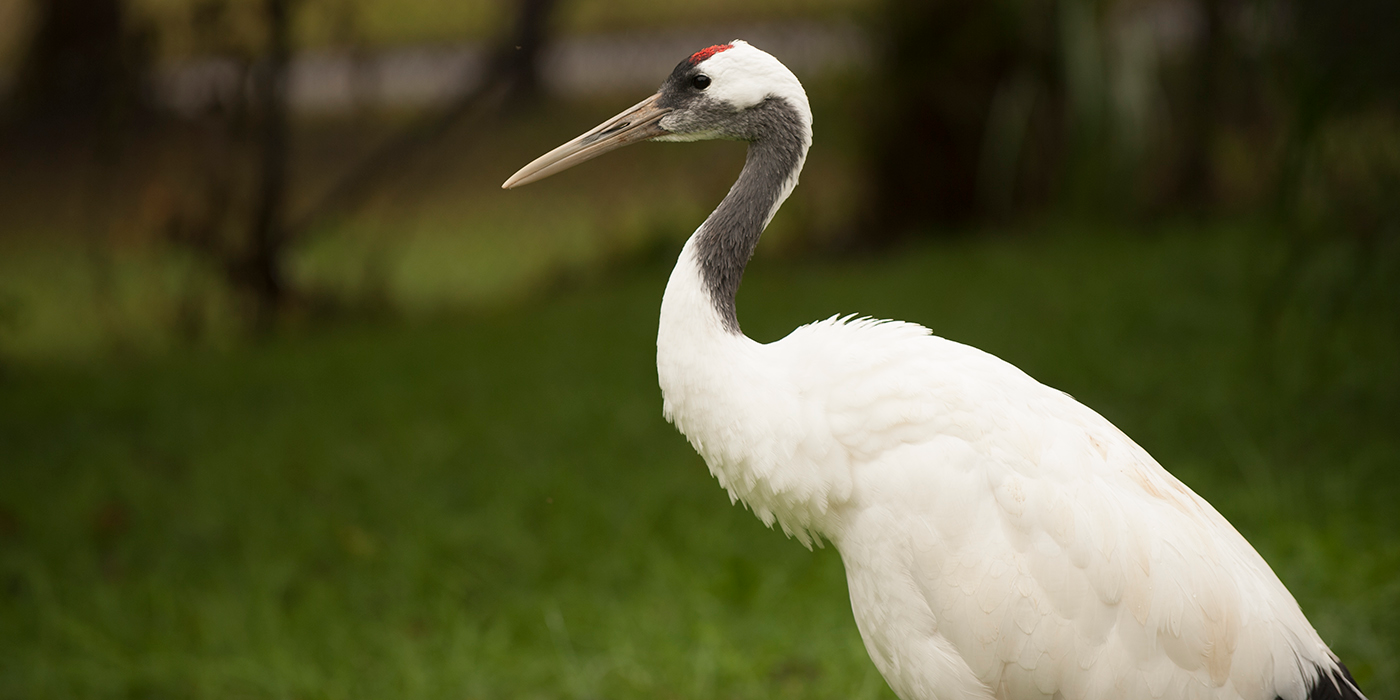 |
| Photo: Smithsonian's National Zoo |
Human activity and a natural dry spell are the main culprits of this habitat loss. In China, scientists have noted that Lake Poyang—the country’s largest freshwater lake, known as a crane paradise—has dried up as a result of sand mining. The Three Gorges Dam has also unbalanced the lake’s water flow, which some scientists believe causes much of its shrinkage.
Red-crowned cranes’ habitats have also seen a lack of rainfall in recent years, partially due to the natural rain cycle and climate change, which leaves all breeding grounds in a new state of aridity. In both China and Russia, spring fires dry up the environment even more.
The cranes living in the Korean peninsula’s Demilitarized Zone—which has become an unintentional wildlife reserve—also face threats: While these cranes eat leftover grain that humans do not harvest, newer agricultural practices limit access to this grain.
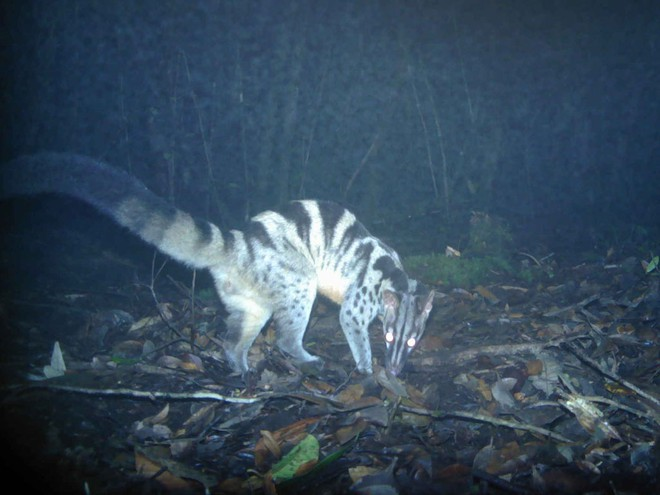 | Many rare species animals found in Nui Ba, Vietnam Many rare species of animals at risk of extinction found still living in the national park gives hope for the conservation of unique biodiversity of ... |
 | Mouse deer species not seen for nearly 30 years found alive in Vietnam A "mouse-deer" that has not been documented alive for three decades has been discovered living in the wild in Vietnam. |
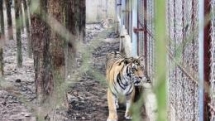 | Protecting tigers and endangered species in Vietnam faces big challenges In the celebration of the International Tiger Conservation Day (July 29), People and Nature Reconciliation (PanNature) in cooperation with the Wildlife Conservation Society (WCS) organized ... |
Most read
Recommended
 Handbook
Handbook
“Peach Blossom, Pho And Piano” To Be Shown During Vietnamese Film Week In Poland
 Handbook
Handbook
Film of Young Director Heads to 2024 Cannes Film Festival
 Handbook
Handbook
Vietnamese Dishes Honored Around The World
 Handbook
Handbook
Conductor Tran Nhat Minh Brings Vietnamese Folk Songs To The World
Popular article
 Handbook
Handbook
Vietnamese Student Wins Prizes At The Kyushu Music Concour International Music Competition
 Handbook
Handbook
Amanda Nguyen: The First Vietnamese Woman To Fly Into Space
 Handbook
Handbook
Three Vietnamese Ports Among Top 50 Largest Container Seaports Worldwide
 Handbook
Handbook







